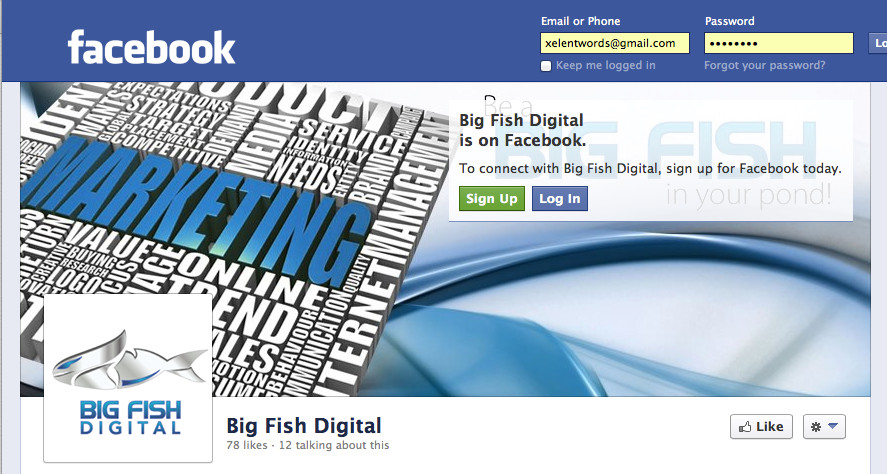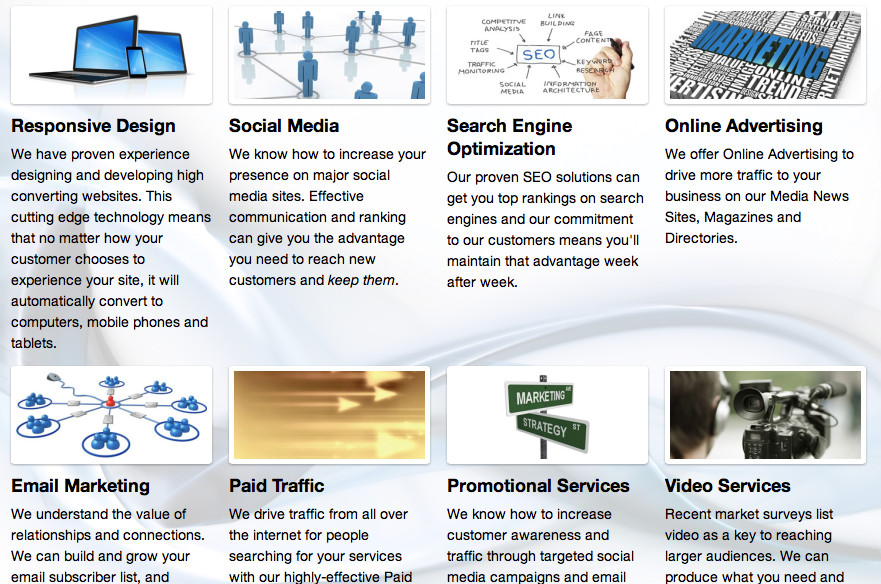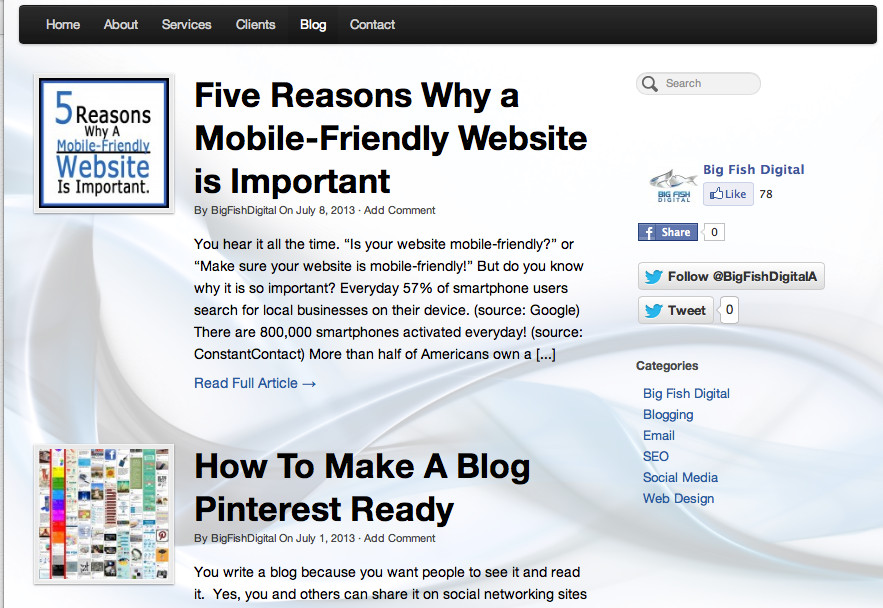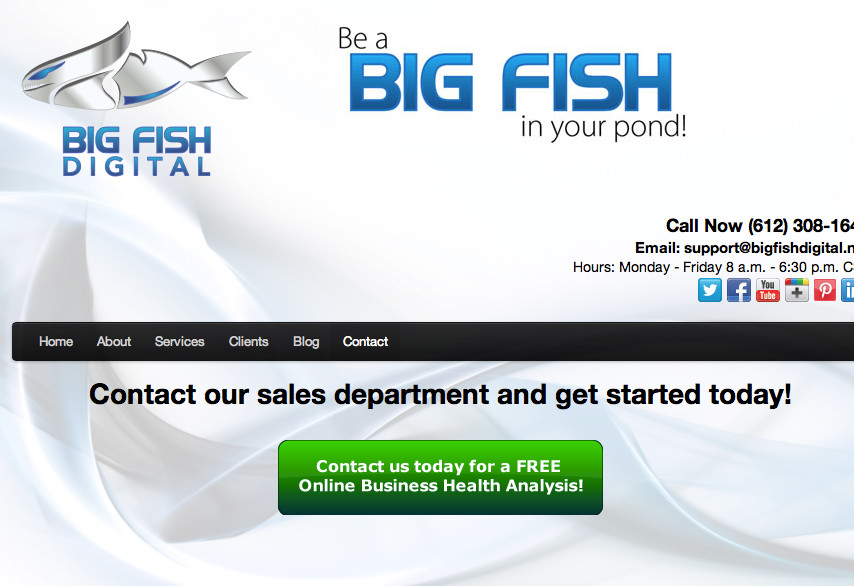Red Wing Publishing's new agency Big Fish Digital uses three-step process to develop customers
Find top vendors used behind the scenes and why
Company: Red Wing Publishing
Market: Minneapolis, Minnesota
Media type: 10 community papers reaching 120,000 homes in affluent suburban neighborhoods
Initiative: Big Fish Digital, digital media agency
Key executives: Mark Poss, CEO, Red Wing Publishing; Luka Yang, director of digital
Challenge: Red Wing is a traditional newspaper company. However, as customers moved on to digital services, they decided to launch new marketing product lines and create a full suite of services. The advertising department felt it was not technically able to do this in addition to its current goals and objectives. Red Wing's executive team decided to launch a separate digital agency, which officially opened in April 2013.
Strategy: The strategic components of the agency include a small separate staff organized to produce a full suite of products, in a three step approach. Key decisions in organizing the agency were:
1. Separate branding. The agency was named Big Fish Digital because of the numerous lakes in the area. “Everybody has a fish story up here," says Poss.
2. Hybrid staffing model. The agency is mostly separated from the company: Director of sales, a fulfillment expert, and a web designer. The company is run as a separate entity to "give it the focus and identify expertise," Poss explains.
The first hire was a director of sales from outside the industry who has a background in corporate marketing and experience working with and selecting vendors.
The second two separate positions include a digital marketing specialist who works with social media and fulfillment strategies and a web designer.
A new integrated position is the digital specialist, who helps with four-legged calls. The company pays a double commission on sales generated.
Traditional reps are not able to sell agency services on their own. They do have specific directives to set the appointments with their top newspaper advertisers and then the agency goes on a four-legged call to do the full needs analysis. The reps get paid if the meeting results in a proposal, plus a co-commission on the value of the sale if it closes
The group is initially targeting its own current client base.
"We already have a trusted relationship we can leverage," says Poss. "Moving forward, we want to drive half the business from new clients and non-newspaper advertisers. That will require additional digital-only sellers. As a small company, we have to grow this in a way that makes the most sense for us and do it in steps."
3. A Three-Step Approach to Product Development
Big Fish is positioned as a full-service agency with services ranging from website to video to consulting. However, while services are customized, director of digital Luka Yang developed three tiers of services:
a. Website development as a service. Whether via onsite staff or third-party vendors, his strategy was to start by offering a basic five page web site with some low-priced reccurring services such as hosting, basic content, and image updating.
b. Second tier of services that drive traffic to the site. With a solid basic site, the next tier of traffic-driving services include upsells to organic search strategies, paid search, social media, and advertising.
c. Ongoing content creation. Finally, the agency writes ongoing quality content that engages new arrivals and converts them via email sign-up forms. Content creation also provides a high-end reccurring service with high ROI.
To illustrate this approach, Yang hypothesizes a Joe's Auto Shop. Joe's first buys the website with the standard five optimized pages. It's SEO-friendly, so is easily found and has an email form that offers a free oil service in return for data capture.
Joe's site will already convert at a much higher rate than will one with one page and maybe 100 words of content with information that, Yang imagines, is "jumbled and all over the place."
Then Joe's can buy additional services as well to market its free oil service via social media, Google AdWords, and advertising.
4. Hybrid inhouse/outsourced vendor strategy
To pull off a broad range of service upsells, Yang uses both in-house and third party vendors to optimize margins.
• Website development is inhouse on WordPress. WordPress has responsive themes and thus, is already mobile-friendly. "Almost all mobile sites are built through WordPress," Yang says. "It's easier to use; me and my inhouse design team know how to use it, and there are lots of plug-ins, tools, and developers." WordPress ecommerce plug-ins are used for the media company's own inhouse initiatives as well as for customers.
For very service-oriented outsourcing, Yang's strategy is to screen for expertise, not product lines, and looking for a “sweet spot”—something the vendors were especially good at—that would create differentiation in a crowded market of digital marketers.
• SEO and SEM are both outsourced, white labeled back-shop functions so that Big Fish only "manages the control of the customer relationship," Yang says. "They are invisible."
For SEO they chose Search Influence . This company's practices are typical of "any good SEO provider," says Yang, who likes that they excel at taking the time to understand client objectives up front. They provide the research utilizing Google AdWords to find the best key word, writing content using those key words, and embedding this on the customers' sites.
“It's not a set-it-and-forget-it strategy," says Yang. "We are constantly optimizing and looking for ways to improve."
Customer service from Search Influence includes monthly customer reports with the Big Fish brand.
Pricing for SEO packages is tiered ranging from $295 set up to $1500 plus per month for quality content. Basic set-up is $295; the ProPlan level is $595 for set up and $599 a month for five key words and five SEO'd pages. Platinum is $1,500 a month.
• For SEM/PPC programs they partnered with Xcite Media. This small ad agency in Denver, identified through business relationships, was created in 2011 by three partners with a background at Super Pages. In two years, Xcite grew to more than 20 employees. They are one of 1,800 Google Engage partners.
Xcite's sweet spot, Poss says, is large PPC campaigns in the range $5,000 per month and up. For Big Fish Digital, they also agreed to handle smaller clients. The entry is still $1,200 a month for a PPC campaign and up to $1,900 for levels above that.
Like ReachLocal's model, the breakdown of service charges versus what is spent directly on AdWords is not on the rate sheet.
"We sell the package based on the value we bring in the areas of analysis, keyword research, conversion tracking, campaign optimization and reporting," says Poss. "The transparency comes from the reporting and the value we can demonstrate for the spend."
The customer relationship is strengthened as Big Fish shows the value of various key words, in terms of traffic and converstions, to customers.
Yang gives an example: "Let's say a landscaper wants to be found for a certain niche aspect, such as paving or boulder walls in a certain geographic area. That niche's key words are good, highly trageted traffic, but will not drive enough traffic. Other general key words, such as landscaping, or words they might not know, will drive more traffic. We try to find the right combination."
Inhouse includes a variety of other services. Big Fish offers a variety of other services, including reputation management, email, video production, graphic design using their newspaper designers and their outsourcing company Affinity Express, and online strategy consulting.
Results:
• Sales metrics are in the "too soon to tell" as of this report, says Poss, who notes that clients have been "mixed bag of tricks" ranging from real estate to landscaping to manufacturing. "The patterns just haven't emerged yet."
• From customer needs and media profitability standpoint, SEO and video have been the most popular, along with website development which is lower priced but used frequently. "We expect that mix to change as we do more social," Poss says.
Resources :
SEO: Allison Ruth Zeringue
Search Influence
504.208.3900, ext. 209
Xcite Media Group
SEM: Ryan Meissner
ryan@xcitegroup.com
Outsourcing graphics: Affinity Express
Website development and mobile optimization: WordPress
Contacts at Big Fish Digital: Luka@bigfishdigital.net, 612.308.1648; Mandi K. Brown, marketing specialist, Mandi@bigfishdigital.net, 952.345.6884

The author, Alisa Cromer is publisher of a variety of online media, including LocalMediaInsider and MediaExecsTech, developed while on a fellowship with the Reynolds Journalism Institute and which has evolved into a leading marketing company for media technology start-ups. In 2017 she founded Worldstir.com, an online magazine, to showcases perspectives from around the world on new topic each month, translated from and to the top five languages in the world.

















